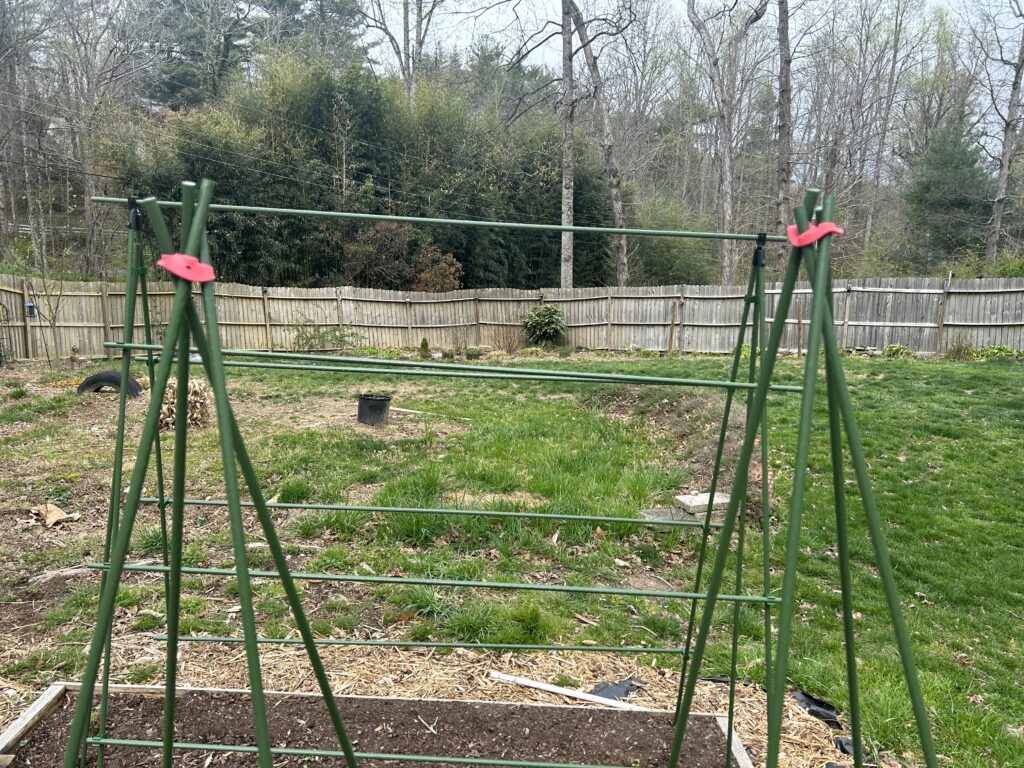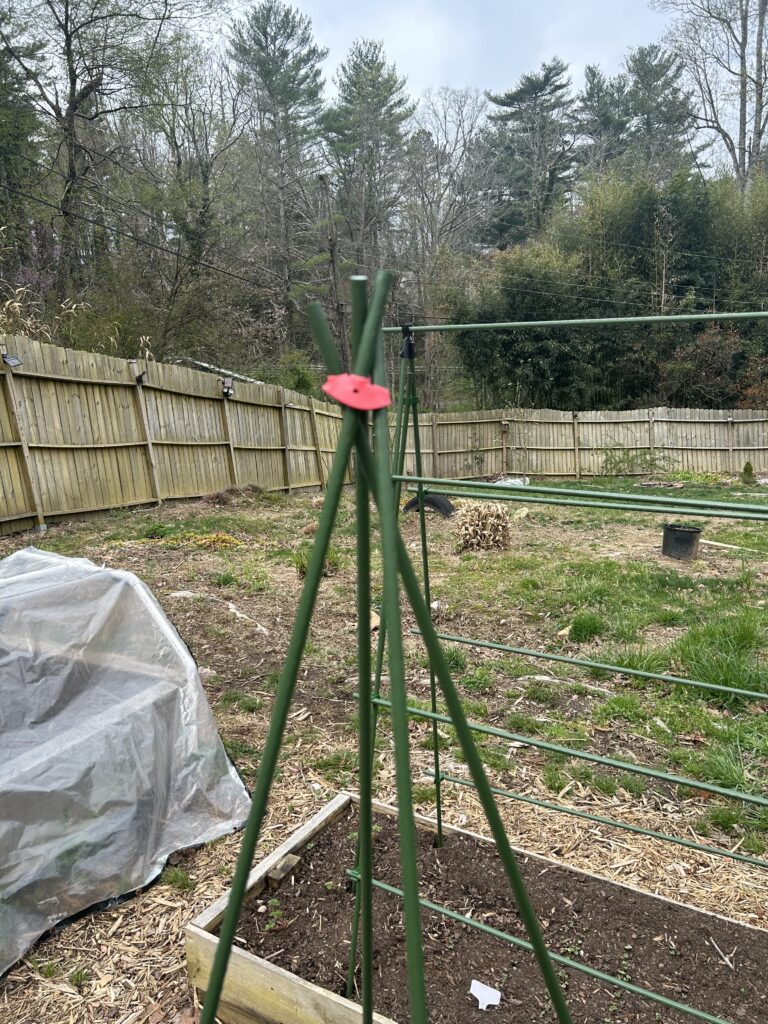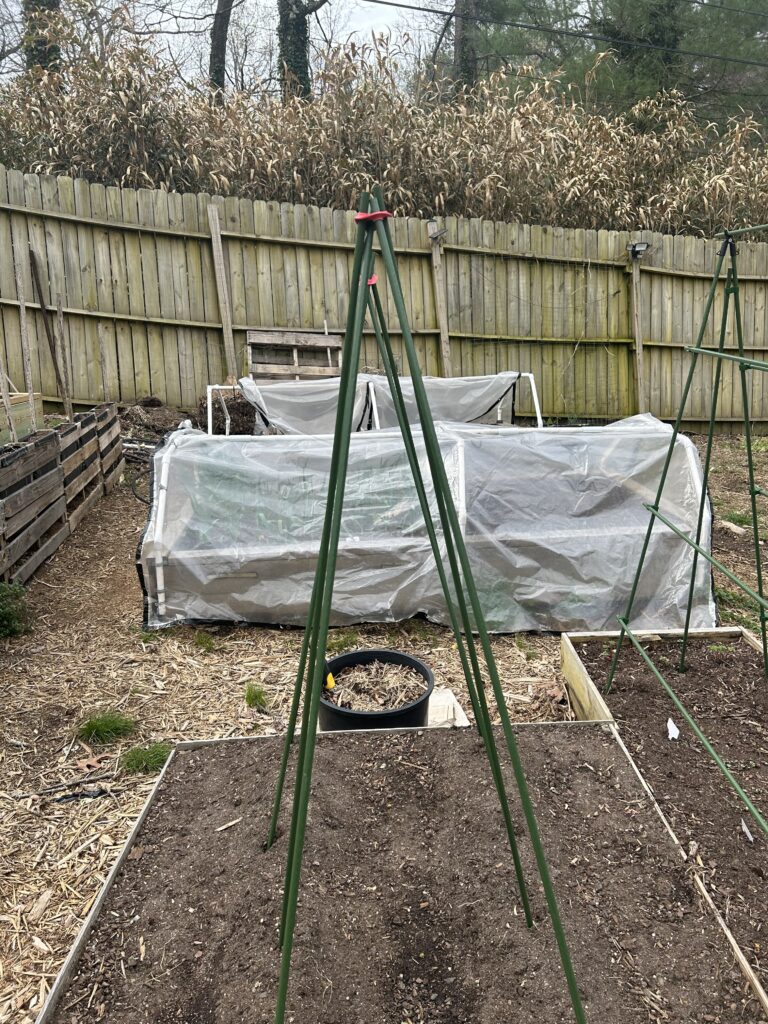Ahem, listen up, gardeners! Bad Gnome here. It’s time to talk about these teepee trellises that seem to be all the rage in raised bed gardens nowadays. As a grumpy old gnome who has seen his fair share of gardening trends come and go, I have some thoughts to share on the pros and cons of using these trellises. So grab a stool and get ready to hear it straight from me.



In addition to doing my daily walkabout in gardens this morning, I was asked to write this post. Just a warning that there is a Boring topic to follow and if you decided to move onto something more exciting, I wouldn’t blame you. I’m just waiting for beer-thirty because I am particularly thirsty today. Maybe I should write six blog posts today. Back to the topic at hand – teepee trellises.
Pros
First things first, let’s talk about the pros of using teepee trellises in raised bed gardens. One of the main benefits is that they allow plants to grow vertically, which can be a game-changer for smaller gardens or those with limited space. Instead of sprawling outwards and taking up valuable real estate, your plants can reach for the sky and take advantage of every inch of your raised bed. Plus, it’s a great way to add some height and visual interest to your garden.
Another advantage of teepee trellises is that they can help with airflow and sunlight exposure. When plants are allowed to grow vertically, they are less likely to become overcrowded and can receive more direct sunlight, which can lead to better growth and higher yields. Additionally, the open structure of the trellis allows for better airflow, which can help prevent diseases and pests from taking hold.
Cons
Now, let’s talk about the cons of using teepee trellises. First and foremost, they can be a pain in the butt to set up. Depending on the size of your garden and the number of trellises you need, it can take a significant amount of time and effort to construct them. Plus, if you’re not careful, they can easily topple over in windy or stormy weather, which can be frustrating and potentially damaging to your plants.
Another potential downside of teepee trellises is that they may not be the best choice for all types of plants. While they work great for climbing vegetables like beans, peas, and cucumbers, they may not be sturdy enough for heavier plants like tomatoes or squash. In these cases, a more robust trellis system may be necessary to support the weight of the plants.
It’s All About the Look
Finally, teepee trellises can be a bit of an eyesore in your garden. While they can certainly add some height and interest, they can also look messy and unkempt if not constructed properly. Additionally, they may not fit in with the aesthetic of your garden, particularly if you prefer a more formal or structured look. We went with plastic coated stakes and these rubber thingies.
Conclusion
So, there you have it, folks – the pros and cons of using teepee trellises in raised bed gardens, straight from a grumpy old gnome. Ultimately, whether or not to use these trellises is up to you and your specific gardening needs. If you have limited space and want to maximize your growing potential, they can be a great choice. However, if you’re looking for a more polished and structured look, or need to support heavier plants, you may want to explore other trellis options. Whatever you choose, just remember to keep your plants happy and healthy – that’s what truly matters in the end.
Stay strong…

Cheers,
Bad Gnome

[…] For us squirrel-proofing with hardware cloth or tunnels is out of the question because we have already installed our trellises. […]
[…] with gunpowder green tea and local rye whiskey. If you are wanting better yields when doing the raised bed gardening thing, then you must read […]
[…] when you’re dealing with pesky root vegetables like turnips, radishes, and carrots in raised beds. These little buggers can get so thick and tangled, they’ll give you a headache faster than a […]
[…] to drag yourself away from your comfortable gnome home, consider planting your nightshades in raised beds. The benefits are numerous, including better drainage, improved soil quality, and easier pest […]
[…] well, well. Look who finally decided to learn about raised bed gardens. Bad Gnome at your service. I’m here to tell you why this here gnome is in love with […]